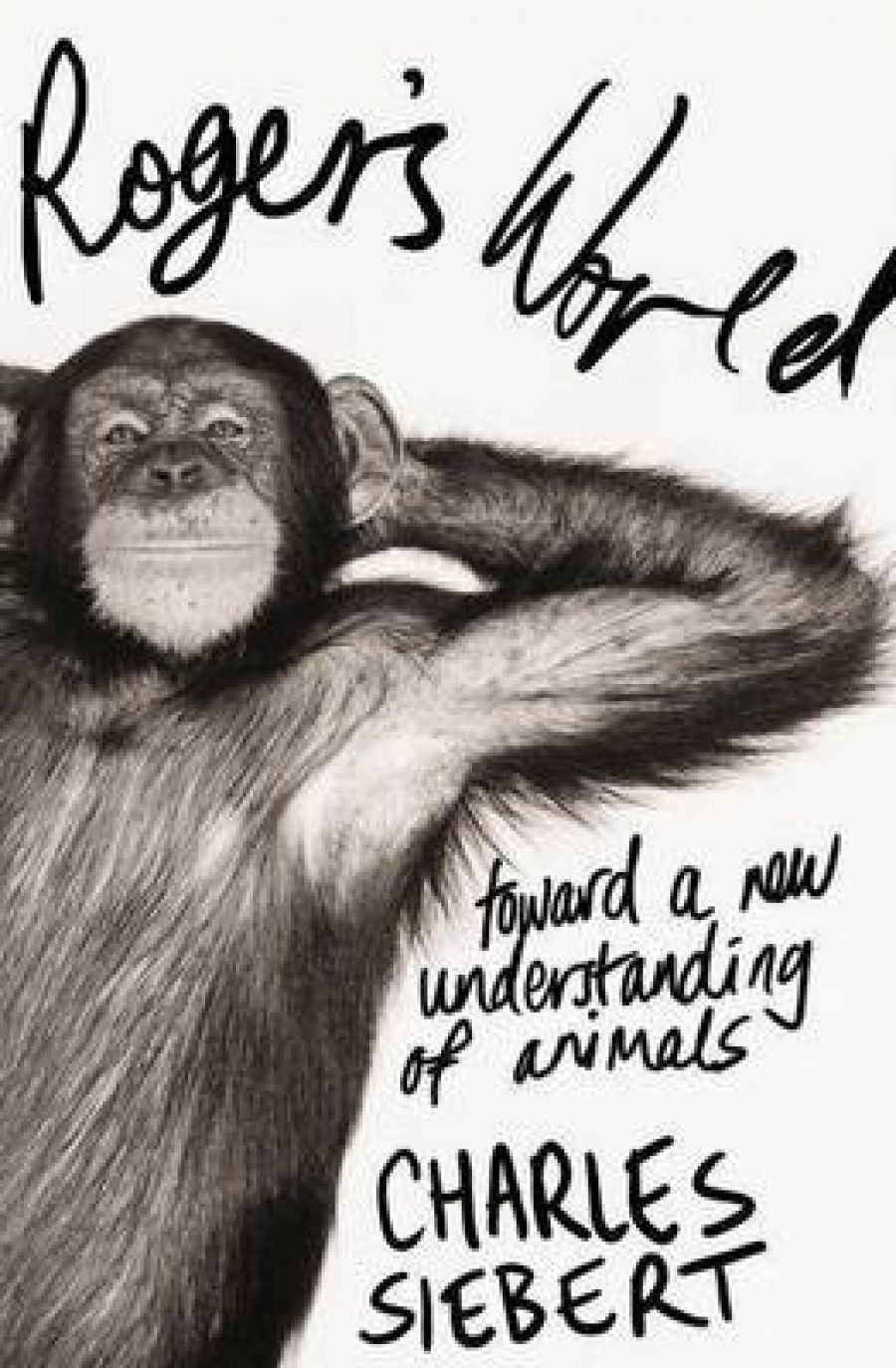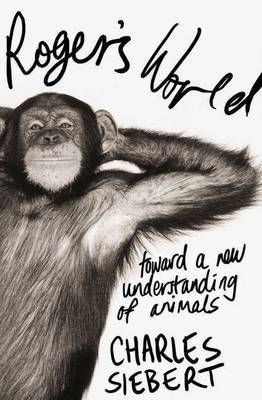
- Free Article: No
- Contents Category: Biology
- Review Article: Yes
- Article Title: Only in America
- Online Only: No
- Custom Highlight Text:
Ostensibly, Roger’s World is an account of Charles Siebert’s whistle-stop tour of primate retirement homes in America. By the author’s reckoning, there are approximately two to three thousand chimpanzees in America, as well as a substantial number of their primate cousins. He travels across the country, visiting captive chimpanzees on an ‘impromptu farewell tour of our own kidnapped and caged primal selves’, until he encounters Roger, with whom he feels a profound connection.
- Book 1 Title: Roger’s World
- Book 1 Subtitle: Toward a new understanding of animals
- Book 1 Biblio: Scribe Publications, $29.95 pb, 224 pp, 9781921372865
- Book 1 Cover Small (400 x 600):

- Book 1 Cover (800 x 1200):

The latent damage caused by human–animal interactions is brought home during the nocturnal stare-downs between Roger and Siebert, in which Siebert contemplates Maurice Temerlin’s book Lucy: Growing Up Human (1976), a harrowing account of Temerlin’s ‘psycho-anthropological’ experiment to raise Lucy, a chimpanzee, as a human child. Lucy lived in the Temerlin home as part of the family. She learnt sign language, raised a pet cat and entertained visitors. After she had lived with the Temerlins for ten years, Lucy’s ‘parents’ decided to release her into the wild. They spent three days with her at a holding compound in Africa before returning to America. Fortunately, their babysitter, Janis Carter, took it upon herself to stay for the six years it took Lucy to adapt to life in the wild. A photograph of Carter’s reunion with Lucy six months after she left her to fend for herself is extremely distressing. Lucy’s breeder said her release was the ‘most cruel damn thing that could have been done’. One can only agree wholeheartedly and hope that similar experiments will never be permitted again.
Siebert’s subtle meanderings between Roger’s and Lucy’s stories help throw the twin potentialities of destruction and recuperation within the human empathetic impulse into sharp relief. While the Temerlins’ abandonment of Lucy was unquestionably reprehensible, Carter had no way of knowing if her actions were ultimately helpful or harmful. Nor can Siebert, as he holds Roger’s gaze, be sure how his actions will affect Roger. He hesitates to offer Roger his hand, as doing so could have dire consequences for the emotionally damaged chimpanzee, yet in spite of his reservations, he does finally reach out and touch Roger. The result is positive, but Siebert had no way of knowing such before making the gesture.
Woven throughout Siebert’s seamless digressions about human–animal relationships is a broader evolution–Creation debate, in which Siebert displays particular prejudice against Creationists and individuals who continue to breed and use chimpanzees for entertainment purposes. His encounters with both groups are peppered with words like ‘scary’, ‘suspicious’ and ‘nefarious’, and he asserts: ‘the exotic-animals trade is, by and large, licensed and legal, and, like the right to bear arms in the United States, just as staunchly defended.’
Siebert’s passion is admirable, and he offers excellent insights into the blinkering effect of entrenched language choices, but while one can understand his frustration with people who enjoy all of the benefits of science yet deny one of its foundation theories, it is harder to sympathise with his negative opinion of the breeders he encounters in his travels. No doubt there are ignorant and ‘nefarious’ breeders, but the ones he interviews appear to care deeply for their chimpanzees. His use of negative language and his alignment of exotic animal breeders with groups that provoke emotive reactions introduce a discordant note into an otherwise effortless style.
Roger’s World is enjoyable, and contains some fascinating asides into ‘humanzee’ lore and the strange history of animal trials in human courts of law. It is not, however, a feel-good account of human largesse toward animals that have outlived their usefulness. Current social and economic problems make it easy to overlook the many animals that are voiceless victims of increased consumption and inequality; victims with ‘minds enough to lose and histories that can only hasten the process’. Siebert’s timely narrative suggests that it is time for deeper consideration of our relationship with animals; time, perhaps, to reappraise the gap between our ethical and moral obligations to animals and our actions.
Winner of the 2009 ABR Reviewing Competition


Comments powered by CComment